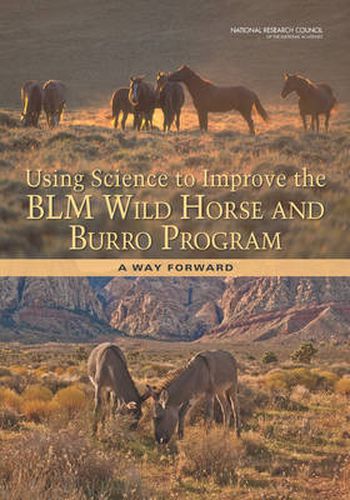Readings Newsletter
Become a Readings Member to make your shopping experience even easier.
Sign in or sign up for free!
You’re not far away from qualifying for FREE standard shipping within Australia
You’ve qualified for FREE standard shipping within Australia
The cart is loading…






Using Science to Improve the BLM Wild Horse and Burro Program: A Way Forward reviews the science that underpins the Bureau of Land Management’s oversight of free-ranging horses and burros on federal public lands in the western United States, concluding that constructive changes could be implemented. The Wild Horse and Burro Program has not used scientifically rigorous methods to estimate the population sizes of horses and burros, to model the effects of management actions on the animals, or to assess the availability and use of forage on rangelands.
Evidence suggests that horse populations are growing by 15 to 20 percent each year, a level that is unsustainable for maintaining healthy horse populations as well as healthy ecosystems. Promising fertility-control methods are available to help limit this population growth, however. In addition, science-based methods exist for improving population estimates, predicting the effects of management practices in order to maintain genetically diverse, healthy populations, and estimating the productivity of rangelands. Greater transparency in how science-based methods are used to inform management decisions may help increase public confidence in the Wild Horse and Burro Program.
$9.00 standard shipping within Australia
FREE standard shipping within Australia for orders over $100.00
Express & International shipping calculated at checkout
Using Science to Improve the BLM Wild Horse and Burro Program: A Way Forward reviews the science that underpins the Bureau of Land Management’s oversight of free-ranging horses and burros on federal public lands in the western United States, concluding that constructive changes could be implemented. The Wild Horse and Burro Program has not used scientifically rigorous methods to estimate the population sizes of horses and burros, to model the effects of management actions on the animals, or to assess the availability and use of forage on rangelands.
Evidence suggests that horse populations are growing by 15 to 20 percent each year, a level that is unsustainable for maintaining healthy horse populations as well as healthy ecosystems. Promising fertility-control methods are available to help limit this population growth, however. In addition, science-based methods exist for improving population estimates, predicting the effects of management practices in order to maintain genetically diverse, healthy populations, and estimating the productivity of rangelands. Greater transparency in how science-based methods are used to inform management decisions may help increase public confidence in the Wild Horse and Burro Program.